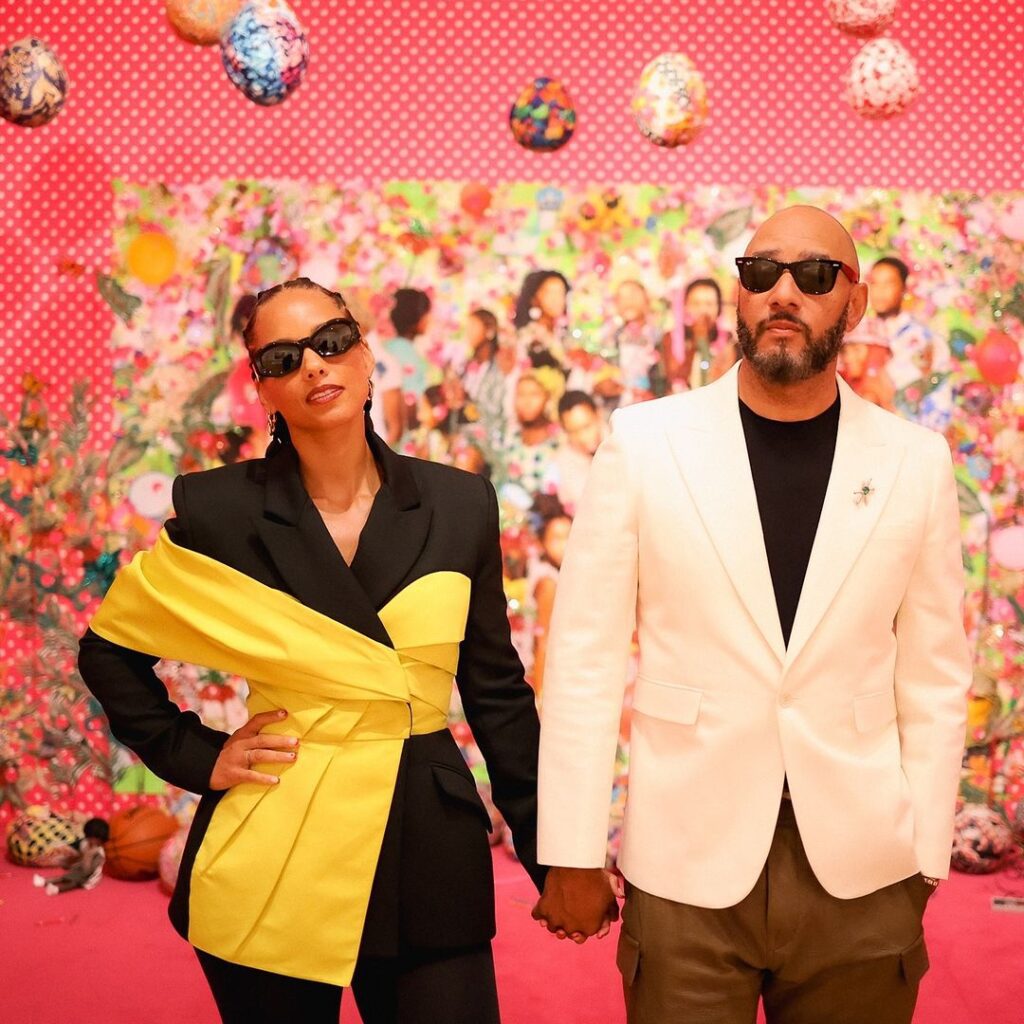The High Museum of Art is the exclusive Southeastern venue for Giants: Art from the Dean Collection of Swizz Beatz and Alicia Keys, running until Jan. 19, 2025. This major exhibition features nearly 100 works by influential Black American, African, and African diasporic artists, including Gordon Parks, Kehinde Wiley, and Amy Sherald. Organized by the Brooklyn Museum, Giants highlights the artistic legacy of multigenerational creators, spanning icons like Nick Cave and Lorna Simpson to contemporary voices such as Deana Lawson and Ebony G. Patterson.
“Giants” stands as a testament to the Deans’ ethos of “collecting and preserving the culture of ourselves for ourselves, now and into the future.” Through approximately 115 objects, including 98 major artworks, the exhibition traces the evolution of an audacious and ambitious collection and explores how the featured artists and their work have grappled with societal issues, embraced monumentality and made a palpable impact on the art canon.
In addition to paintings, photographs and sculptures, the galleries include noteworthy examples of the Deans’ early non-art collecting interests including albums, musical equipment, BMX bikes, and related ephemera.

Born and raised in New York, Swizz Beatz and Alicia Keys have made waves in music for decades while exploring diverse passions in art and culture. Swizz started his career as a DJ before evolving into a performer and producer for his family’s Ruff Ryders record label at just 17. Meanwhile, Keys, a 16-time Grammy Award winner, learned piano as a child and skyrocketed to fame with her debut album at age 20.
The High Museum exhibit includes a tribute to legendary artists in the section “On the Shoulders of Giants,” showcasing works like Esther Mahlangu’s vibrant reimaginings of South African Ndebele house paintings alongside powerful photography by Kwame Brathwaite, Malick Sidibé, and Gordon Parks. The Deans hold the largest private collection of Parks’ work, which documents moments of self-presentation, pride, and sociopolitical milestones. Iconic artists like Jean-Michel Basquiat, Ernie Barnes, and Barkley L. Hendricks, who captured the essence of their times while shaping the future of art, also feature prominently.
In the section “Giant Conversations,” the exhibition explores how artists have long critiqued the world around them. Lorna Simpson’s Tense (1991) examines Black women’s self-representation, while Nick Cave’s textured sculptures reflect how Black men use costumes to protect themselves from violence. Jerome Lagarrigue and Henry Taylor spotlight social issues like homelessness and protest, giving visibility to marginalized communities.
Celebrating Black joy and resilience, Giants also highlights the beauty and connectivity within global communities. Jamel Shabazz’s photography pays tribute to everyday New Yorkers from the 1980s to today, while Hassan Hajjaj captures the spirit of Morocco’s female henna artists. Amy Sherald’s large-scale diptych portrays Baltimore’s dirt bike culture and the freedom that comes with riding—a passion Swizz Beatz shares.

